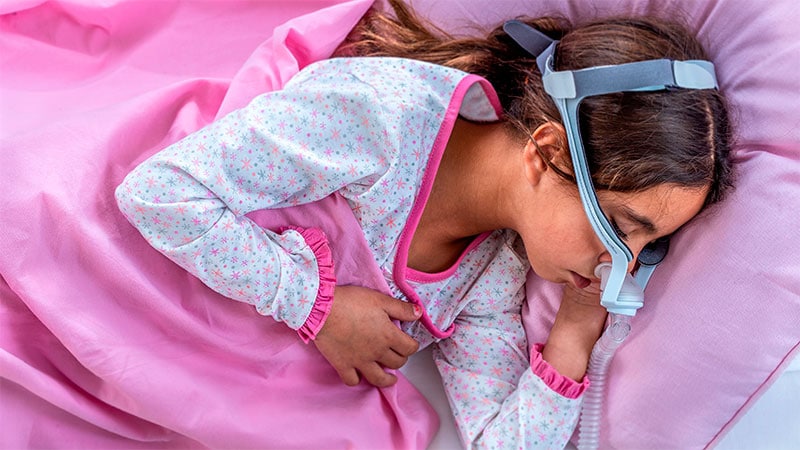TOPLINE:
Nocturnal pulse oximetry (NPO) indices, such as the 3% and 4% Oxygen Desaturation Indices (ODI3 and ODI4, respectively), demonstrated moderate sensitivity and specificity for detecting moderate and severe obstructive sleep apnoea (OSA) in children with Down syndrome but showed low sensitivity for detecting mild OSA.
METHODOLOGY:
- Researchers conducted a retrospective study to evaluate the ability of two NPO indices (ODI3 and ODI4) for predicting OSA in children with Down syndrome.
- They compared cardiorespiratory polygraphy (CRP) and NPO recordings in 387 children aged 2-16 years with Down syndrome (median age, 6.1 years; 46.7% girls) who were referred for the evaluation of OSA at two tertiary sleep centres in the UK between May 2016 and May 2024.
- OSA was defined as having an Obstructive Apnoea-Hypopnoea Index (OAHI) of one or more events per hour and classified according to severity as mild (one or more to less than five events per hour), moderate (five or more to less than 10 events per hour), or severe (10 or more events per hour).
- Two-by-two tables were used to determine the sensitivity and specificity of various cutoff values of NPO parameters for predicting OSA: oxygen saturation (SpO2), ODI3, ODI4, minimum SpO2, the Delta 12-second index, and the percentage of analysis time with SpO2 < 94%, < 92%, and < 90%.
TAKEAWAY:
- Of 387 children, 265 (68.5%) had OSA, with 164 (42.4%) having mild OSA, 51 (13.2%) having moderate OSA, and 50 (12.9%) having severe OSA.
- An ODI3 threshold of 19 or more events per hour provided the highest combined sensitivity and specificity for predicting OSA (59.2% and 74.6%, respectively); increasing the threshold to 23 or more events per hour provided the highest combined sensitivity and specificity for an OAHI of five or more events per hour (70.3% and 79.7%, respectively) and 10 or more events per hour (82.0% and 73.9%, respectively).
- An ODI4 threshold of 10 or more events per hour yielded moderate sensitivity (76.2%) and specificity (75.2%) for predicting OSA; a threshold of 13 or more events per hour provided moderate sensitivity (72.0%) and high specificity (80.7%) for an OAHI of 10 or more events per hour.
- For predicting an OAHI of one or more events per hour, an ODI3 threshold of 19 or more events per hour yielded a positive predictive value of 83.5% and a negative predictive value of 45.7%, and an ODI4 of eight or more events per hour yielded a positive predictive value of 82.8% and a negative predictive value of 47.5%.
IN PRACTICE:
“Oximetry alone does not provide a reliable diagnostic tool for evaluating OSA in children with DS [Down syndrome]; therefore, we recommend CRP/PSG [polysomnography] should be performed,” the authors wrote.
SOURCE:
This study was led by Hannah Vennard, Paediatric Respiratory and Sleep Medicine, Royal Hospital for Children, Glasgow in Glasgow, Scotland. It was published online on August 11, 2025, in Archives of Disease in Childhood.
LIMITATIONS:
Using CRP instead of polysomnography meant that total sleep time was estimated, which could have potentially led to the underestimation of the OAHI due to underscoring of hypopnoeas not associated with desaturation when arousals from sleep could not be detected. The total recording time of stand-alone oximetry does not match the total sleep time measured using CRP, which may have affected the accuracy of oximetry indices in predicting the OAHI. The high prevalence of central apnoeic events may have affected the accuracy of ODI thresholds for predicting OSA.
DISCLOSURES:
This study did not receive any funding from any source. The authors declared no conflicts of interest.
This article was created using several editorial tools, including AI, as part of the process. Human editors reviewed this content before publication
